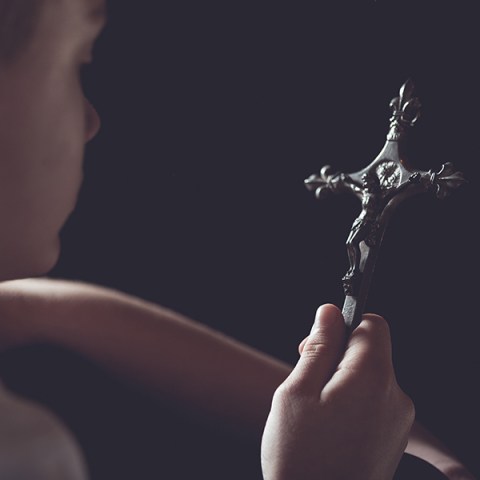The Bible I had as a child simply won’t do for my own daughters I remember the picture Bible I had as a child. It was thick and heavy, and I spent many hours gazing at the colorful pictures, studying the faces and dramatic scenes. The stories sometimes blended together and I didn’t always understand what was going on or why, but it was the images that struck me the most — and stayed with me. To this day, it’s hard not to picture Adam and Eve as a Swedish-looking couple walking around in an apple orchard.
But now I have almost 8-year-old twins, and that’s not the Bible I want them looking at. My daughters have curly dark brown hair, dark brown eyes, and brown skin, yet all around them every day— in books, magazines, movies, signage, you name it — are images that rarely resemble them.
This may seem like no big deal, but it is. Images matter. Studies show that while words are processed by our short-term memories — where we only retain bits of those words — images go directly into long-term memory where they become etched in our brains, often for life.
The images children see are not only memorable but formative, which means they’re every bit as important (if not more so) to their development as the words they read or hear. What children see teaches them what is valuable, what is considered “normal” and desirable. Images affect children’s identity formation, their sense of where they fit into the world, and even their ideas about God and goodness.
Children’s religious books may be one of the worst offenders when it comes to missing the mark with images. A few years ago when I went looking for Catholic books for kids that had both beautiful and more inclusive art, I was surprised to discover how little was out there. Much of the art in the books I found looked as if it came from the 1950s, which struck me as odd, given the changing demographics of the US and the fact that many children in our church pews today are not of European descent. Why are these children being exposed to only one kind of image every time they get a religious book or gift to help them along in their faith?
Even in most children’s Bibles, Jesus, Mary, and the disciples rarely look Middle Eastern — they’re depicted as fair-skinned, and look a lot like northern Europeans or Americans. Of course, I know there are target markets that publishers must consider, but still, Christians can surely do better.
Recently, I received a new Bible put out by Ignatius Press called My Catholic Bible. It’s a beautiful hardcover Bible that does an excellent job introducing children to the Word of God and salvation history. All the major stories of the Old and New Testaments are faithfully told and include large portions of text directly from the Bible.
I’ve been reading this Bible every night to my kids and I heartily recommend it — with just one small caveat. The artwork, while an improvement over many children’s Bibles, still doesn’t go quite far enough. Everyone still pretty much has light peach skin and rosy cheeks. (Except the Ethiopian who gets baptized by Philip in the Acts of the Apostles — he’s shown as bald with brown skin, so at least there’s that!) But it does strike me as a little ironic that Adam and Eve are still being depicted as a white westerners, especially given how all evidence currently points to humans originating in east Africa.
It’s not just my kids who should be able to find greater diversity in the religious images they see. All children should. Their frames of reference should be more than one stereotype, and should reflect reality, as well as what is true about Christianity — that God’s people and his saints don’t all look the same. They come from different cultures and parts of the globe. It’s good for children to see the universality of the Church reflected in the art and images they encounter, in a way that mirrors the wideness of the world around them.
For the record, I’m not expecting to find lots of books with images that exactly mirror my daughters’ beautiful features (although it would be nice to find a bit more of that, of course). I’d just like to see religious book publishers be more thoughtful about the range of children who may be reading and the multi-cultural society in which we now live. The images publishers use to help children grow in faith are every bit as important as the stories and information themselves.
For now, I remain vigilant about our book selections — religious and otherwise — and continue to be clear with my kids that the surfer-dude Jesus and the blonde, blue-eyed Mary they keep seeing isn’t what either of them looked like when they walked the earth. (Just don’t get me started on the angels.)








